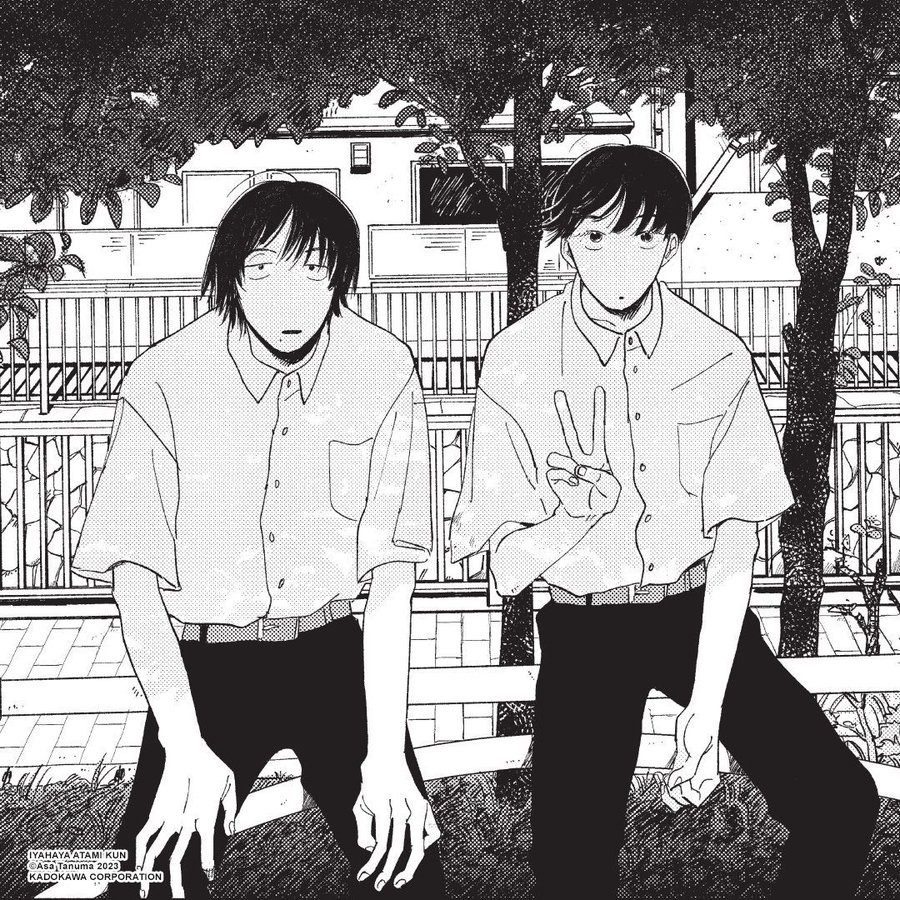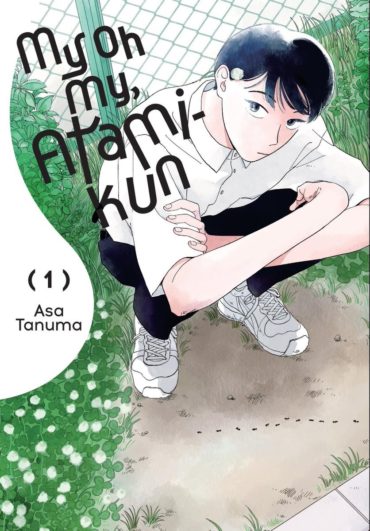My Oh My, Atami-kun Volume 1 Review
What do you do if you’re blessed with dazzling good looks and the girls at your high school keep asking you out? Great, huh? But if you’re first year Atami, you turn them down because you’ve come to realize that you prefer guys. Since his one and only attempt (at the end of middle school) to tell his then-crush how he felt was rejected, he’s been left wondering why and this unanswered question haunts his every interaction. However, he’s made a good friend in the second year in Adachi-san (friend, not crush) from hanging out together at lunchtimes, and Adachi is easy-going and always happy to listen to Atami’s concerns. He invites Atami home for a meal where Atami is made to feel very welcome (he lives with his father, so he appreciates being part of the bustling, lively household). Adachi watches as Atami turns down proposals from girls and falls for one unlikely guy after another and picks up the pieces afterward by discussing in a matter-of-fact way with him what’s happened.

As the school year progresses, Atami meets Adachi’s friend Kunijima (also in the second year) and the three hang out together. When Atami’s class has to move places in the classroom, he finds himself sitting behind the painfully shy and retiring Tsuji-kun who only communicates – at first – in strange grunts and avoids eye contact. Atami has noticed that Tsuji spends much of his time in lessons doing elaborate doodles and eventually asks him one lunchtime to have a chat outside the classroom. Has he made a friend in his own class at last?

My Oh My, Atami-kun is the first manga by Asa Tanuma to be published in English and won the 2023 Yofukashi Manga Award from Bungeishunjuu’s CREA magazine. It’s described as Boys’ Love but if you pick it up expecting a romance, you’ll be disappointed. The manga proceeds at a leisurely (some would even say slow) pace to follow Atami’s day-to-day life, his encounters with other people and the conversations that he has with them. Everyone speaks in the Kansai dialect (unobtrusively and effectively rendered into the US equivalent by translator Amanda Haley). It riffs gently and with wry humour on the issues that beset us all when we’re in our teens (and later). When Adachi gets interested in a young florist at a local store, he admits, “It’s like… just lookin’ is enough for me, if that makes sense.” After all, it takes courage to make a face-to-face confession and face rejection.
Even though the story revolves around Atami discovering that he’s gay and the potential problems that arise from this, his discussions with Adachi (and Adachi’s family) about life and relationships and anything, really, are very realistically and relatably depicted. Adachi tells Atami early on that he isn’t interested him ‘in that way’ and rejects him ‘properly’ which Atami appreciates as that means he knows where he stands with his senpai. It doesn’t get in the way of their friendship too (a refreshing situation to see portrayed in BL!) and it also means Atami can continue coming over for dinner on Fridays.
However, when a senpai from another school hits on Atami (he catches the same train, which is awkward) Atami feels deeply uncomfortable. What should he do? The guy is persistent.
The mangaka’s art style could best be described as minimal but is very distinctive. Although, to be honest, given the way she portrays all her characters, Atami-kun doesn’t look especially handsome or gorgeous compared with his peers, which means that one of the main points of the story doesn’t quite work (not for me, anyway). But seeing the world through Atami-kun’s eyes is what gives the manga its unique and special quality. His earnest soul-searching is very relatable. Who hasn’t, at one time or another, realized, after a painful rejection, as Atami does: ‘The trains are still runnin’ on time. It’s a beautiful day. And my feet keep movin’ on their own. Even when you’ve been rejected, life continues on as usual.’
Amanda Haley’s translation for Yen Press works extremely well; I thought I might have been irritated by the ‘Kansai dialect’ (Kansai-ben) rendered in English, but she does it so skilfully that it is in no way a problem. She also gives us a very useful couple of pages of translation notes. The lettering by Elena Pizarro is similarly unobtrusive; there’s a great deal of conversation in this manga but she delivers where it counts, as in the full-page Timeline of Crushes. Volume 2 is already out in Japan and Volume 3 has just been released although no sign yet of when Yen Press are going to bring us the next in the series; I hope we won’t have to wait too long!
My Oh My, Atami-kun is the kind of manga that repays several readings. The relaxed art style might lead the reader to assume they’re in for a different kind of story, maybe a more in-your-face high school comedy, but the character interactions are quietly infused with observations on life and relationships (of all kinds) and the humour is subtle, though understated. Recommended!
Copyright © 2024 Yen Press
Our review copy from Yen Press was supplied by Diamond Book Distributors UK.


